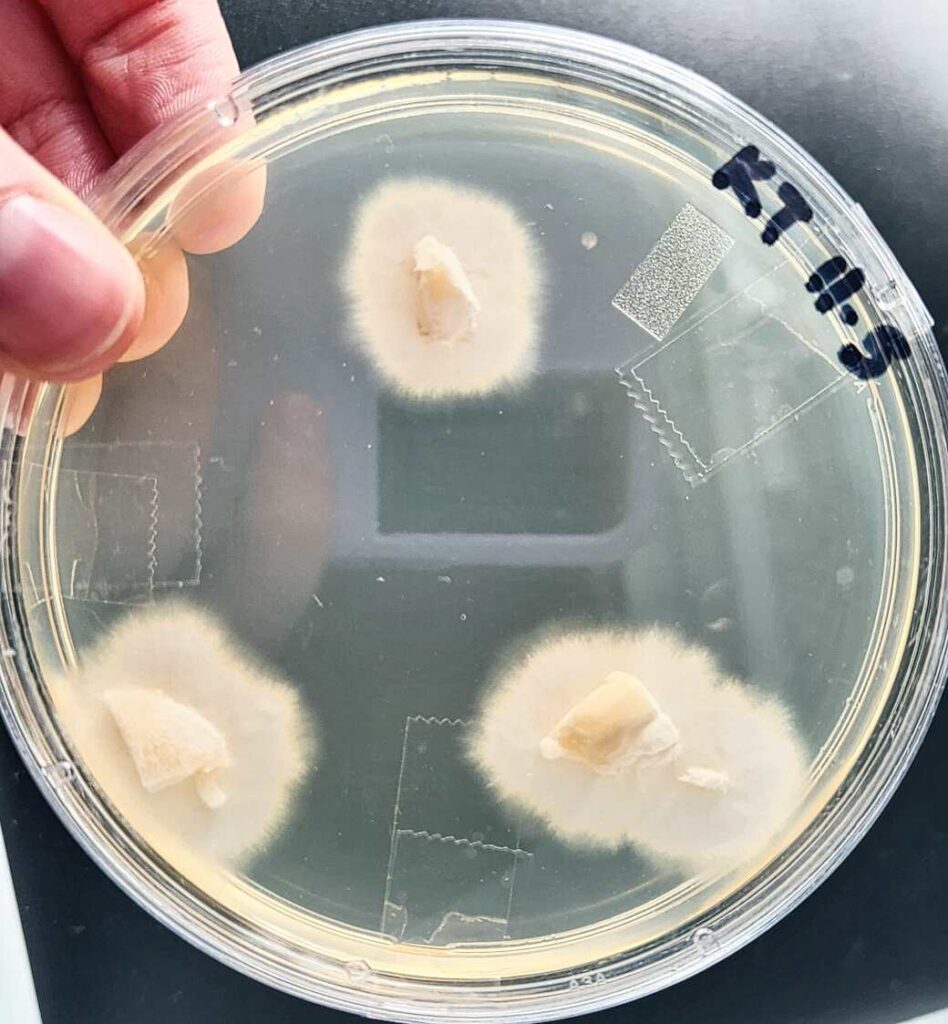
Why Clone King Trumpet Mushrooms
Taste– King Trumpet mushrooms are delicious, hands down. They make a fantastic addition to pasta dishes. These mushrooms are easy to prepare: Briefly pan frying and adding a bit of salt are the only steps needed to bring out their incredible umami flavor. Vegetarians, vegans, and those on a plant-based diet may use King Trumpet mushrooms as a scallop substitute when cooking. King Trumpet mushrooms are also delectable when marinated and grilled. Despite the versatility of this mushroom, they are not widely available in grocery stores at this time. Thus, growing your own may be a good option!
Medicinal Value– King Trumpet mushrooms likely have medicinal benefits. For example, recent studies have shown they may help lower cholesterol, decrease the risk of certain cancers, and demonstrate antiviral activity. Of note, most of the studies specific to King Trumpet mushrooms thus far have involved cell culture or rat participants rather than humans. Thus, definitive conclusions about King Trumpet mushroom consumption and medicinal value in humans will require additional research. However, frequent consumption of mushrooms in general have been found to lower risk of certain cancers in humans.
Ease of Growth– King Trumpet mushrooms are a variety of oyster mushroom, one of the easiest types to grow at home. They produce large, thick mushrooms with a long shelf-life (about a week).
Creating a Semi-Sterile Area for Cloning Mushrooms
This post assumes that you are cloning mushrooms at home and do not have a clean room or laminar flow hood. Don’t feel bad. You can be successful cloning mushrooms with a much cheaper setup! The following supplies will help you create a semi-sterile environment in which to successfully clone mushrooms:
Box fan
Large rubber bands (trash-can size, available online)
HEPA filter the size of your fan (usually 20″x20″)
Lighter
Scalpel or other sharp tool for cutting mushrooms
Petri dishes with agar (we will discuss choosing the best type below)
Isopropyl alcohol
Latex gloves
King Trumpet mushrooms
To create a clean airflow during the cloning process and reduce the risk of airborne contaminants, secure the HEPA filter to your box fan with two or more large rubber bands. See below.
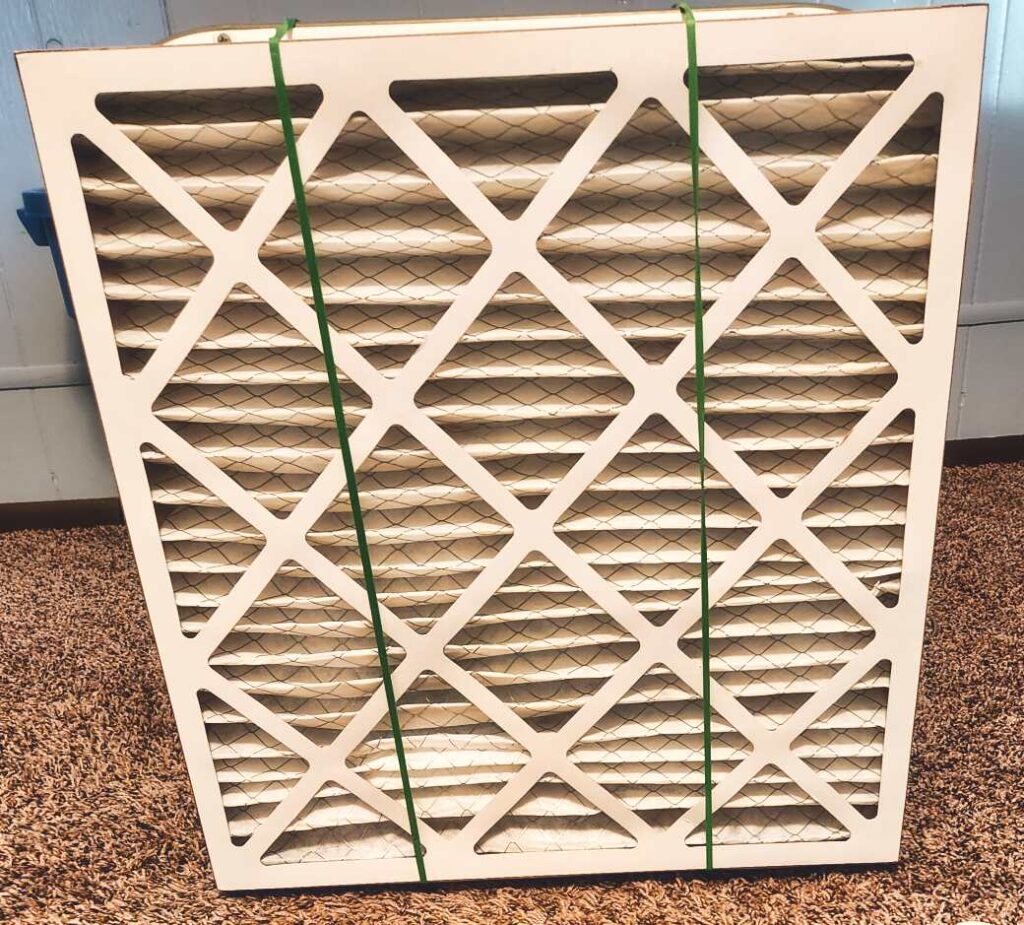
Clone a Winning King Trumpet
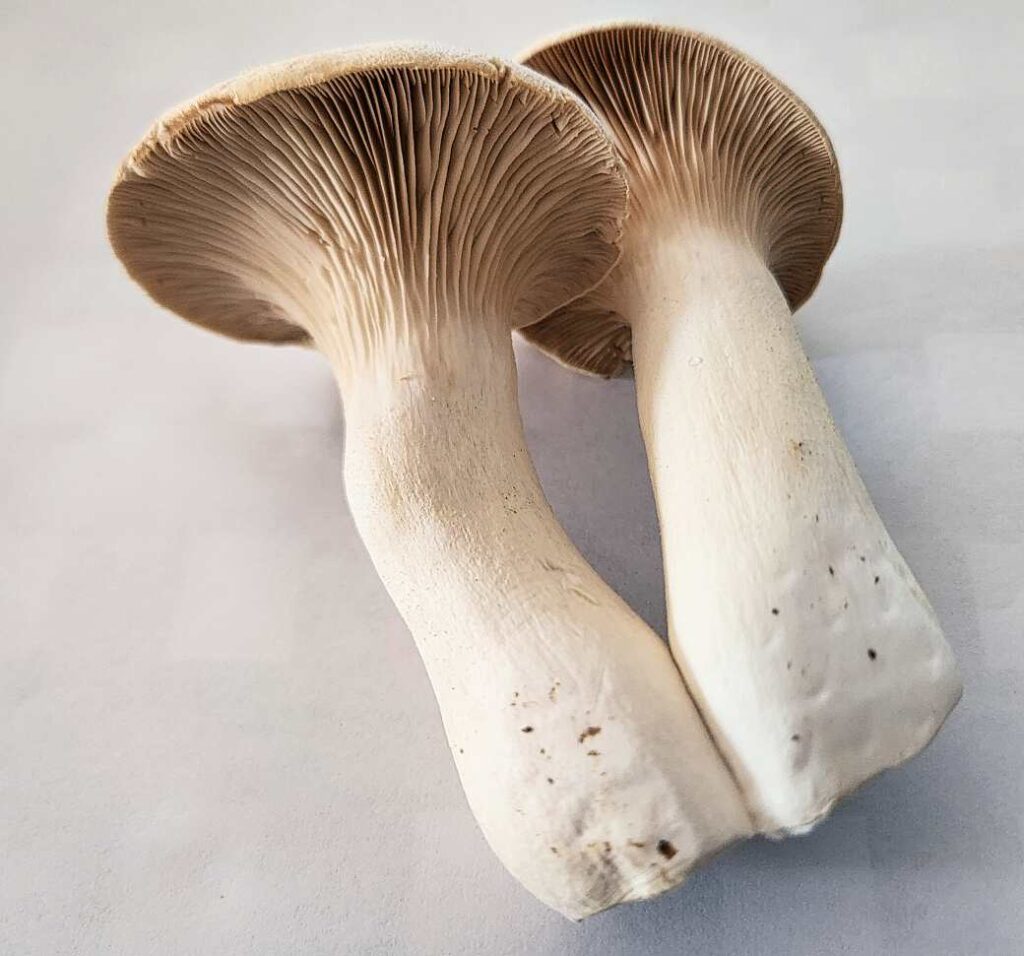
Fresh mushrooms work best for cloning. Some sources suggest mushrooms must be cloned within two days of being picked. However, I have had success using mushrooms sourced from the grocery store (and who knows how old they were). Be sure the mushrooms look fresh and are not visibly dirty or contaminated. You can more easily take samples from larger, rather than smaller, mushrooms. Be sure you are 100% certain of the identity of any mushroom you plan to consume!
Petri Dish Considerations
Although you can make your own agar plates, I highly recommend purchasing them pre-made for your first cloning adventure. They are available through several vendors online. Many sources recommend malt extract agar (MEA) for mushroom cloning. The incubation temperature for the media is 77-86 degrees Fahrenheit. However, my house is not that warm and I do not have any special warming devices for my plates. Thus, I use potato dextrose agar (PDA). This media has an incubation temperature of 65-77 degrees Fahrenheit, which is suitable for use in most homes. In my experience, mycelium will happily grow on PDA.
Of note: whether you order pre-made agar plates or make your own, wait a few days after receiving/making them before mushroom transfer. This way you can visually ensure no competitors are already growing there.

Taking a King Oyster Clone
- Place materials in front of your working fan/filter contraption. Turn fan on to create clean airflow for the cloning process.
- Sterilize your gloved hands and working surfaces with rubbing alcohol. Sterilize your scalpel with an open flame.
- Break the mushroom open with your hands and cut out a small internal portion with the scalpel. Be sure not to touch the outside of the mushroom with your scalpel, as this may contaminate your sample.
- Open your petri dish and place the sample toward the middle. Immediately close the dish.
- Secure the petri dish with scotch tape or parafilm. Label the plate with mushroom variety and date. Wrap with plastic wrap to prevent outside contamination as your clone becomes established.
Watching for Contamination
If contaminants were introduced to your petri dish, either from the air or from your mushroom sample, you will see signs within days. Once you are familiar with the growth habits of King Trumpet mycelium, you will easily notice when something looks “off.”

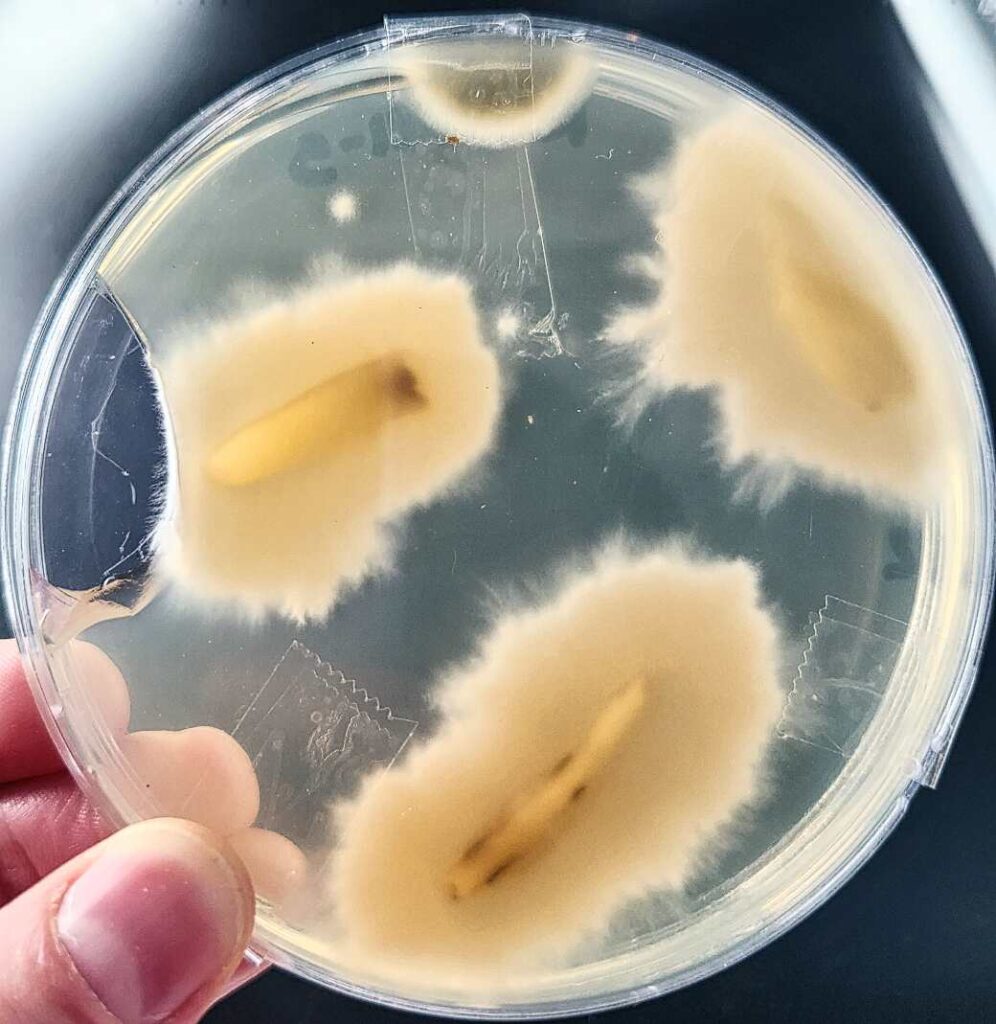
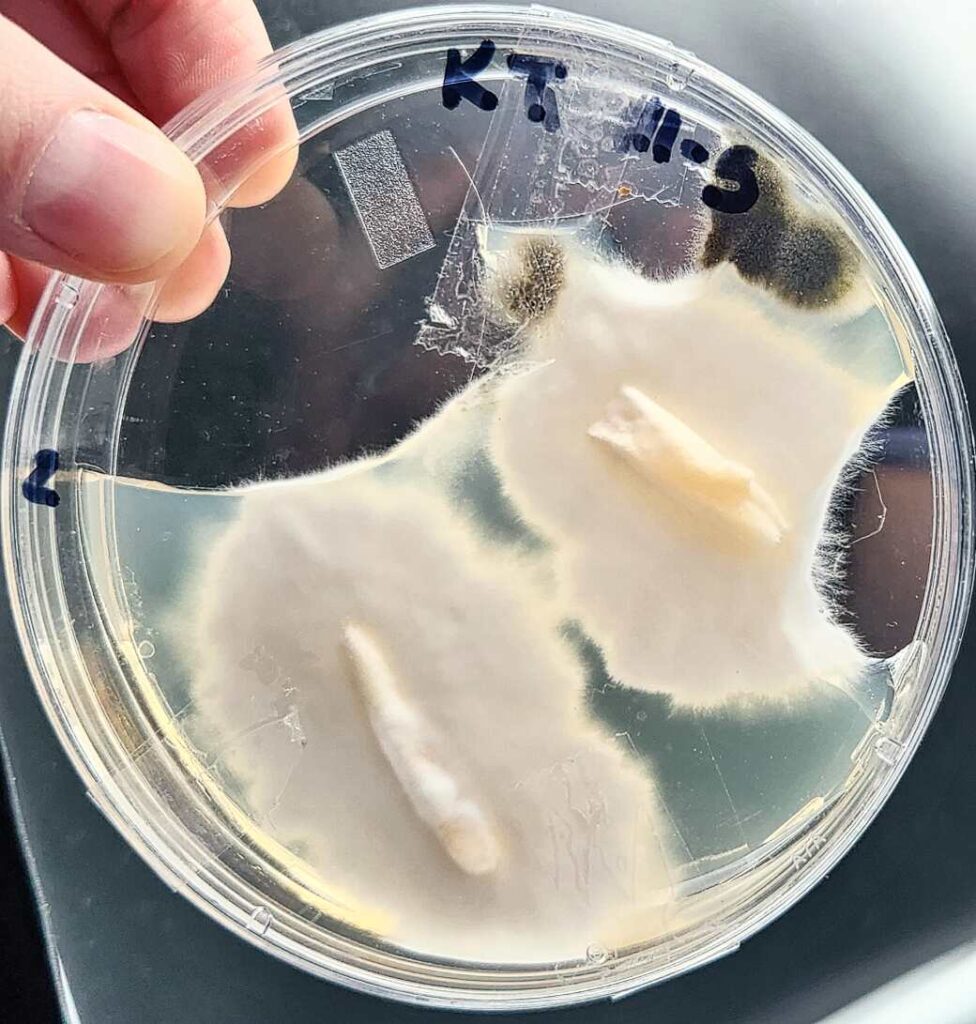
Contamination may occur on your mushrooms, as in the dark coloration on two of the cuttings in the second photo. Non-mycelium growth may also occur in other areas on your agar plates. As demonstrated in the above photos, cutting out areas of contamination is ineffective, as the mold or bacterial growth will recur. If you have clean mycelial growth on a contaminated plate, you will want to cut out the clean portion and place on a new agar plate (see below photos).


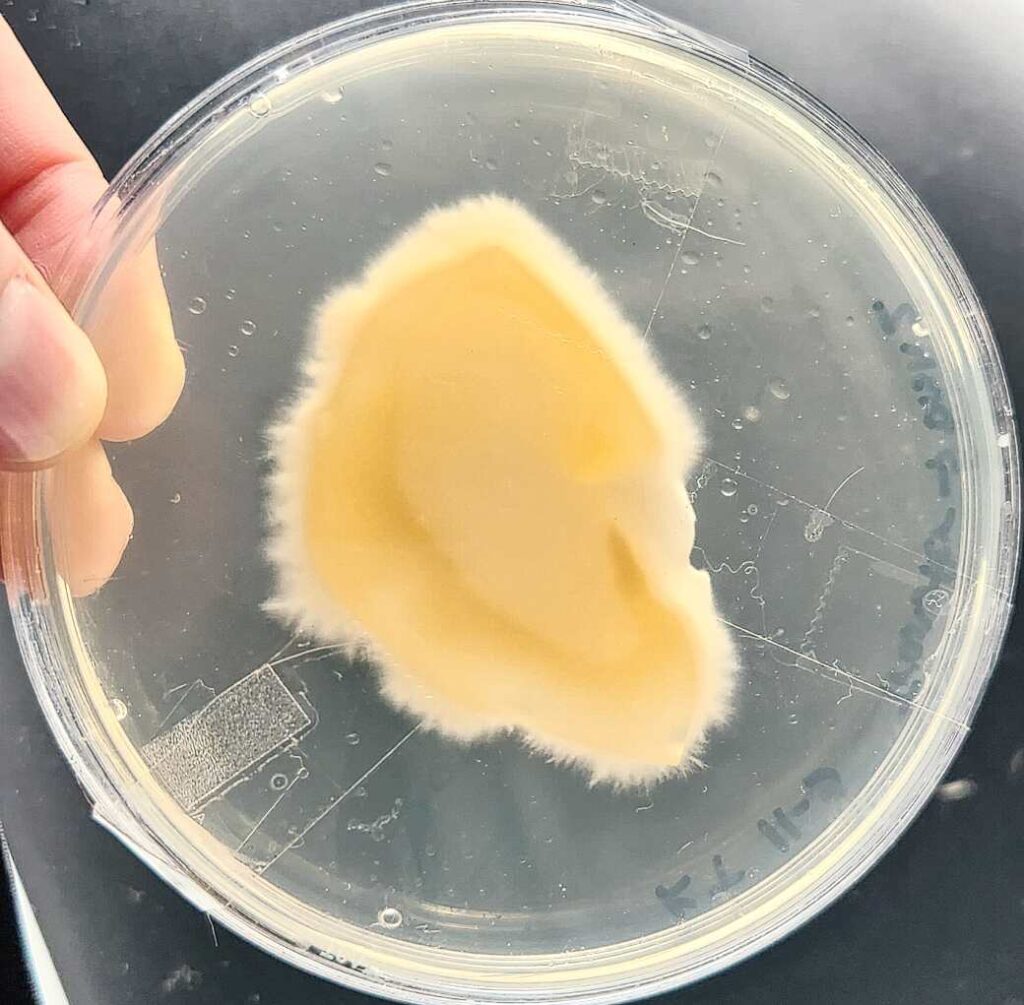
King Trumpet Clone Growth
Below you will see clean front growth (top row of pictures) and back growth (bottom row of pictures). Healthy mycelium should appear thick, white, and fluffy. There should be no dark patches on your plates. The top row of pictures were taken the day of transfer, 11 days post-transfer, and and 16 days post-transfer.
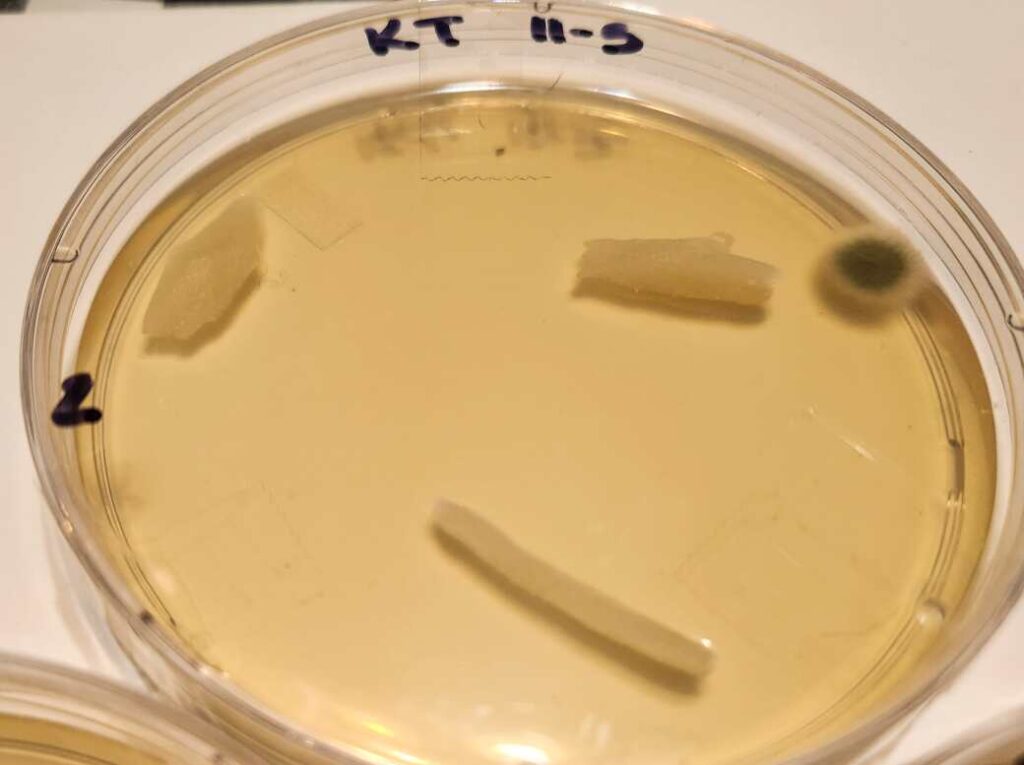

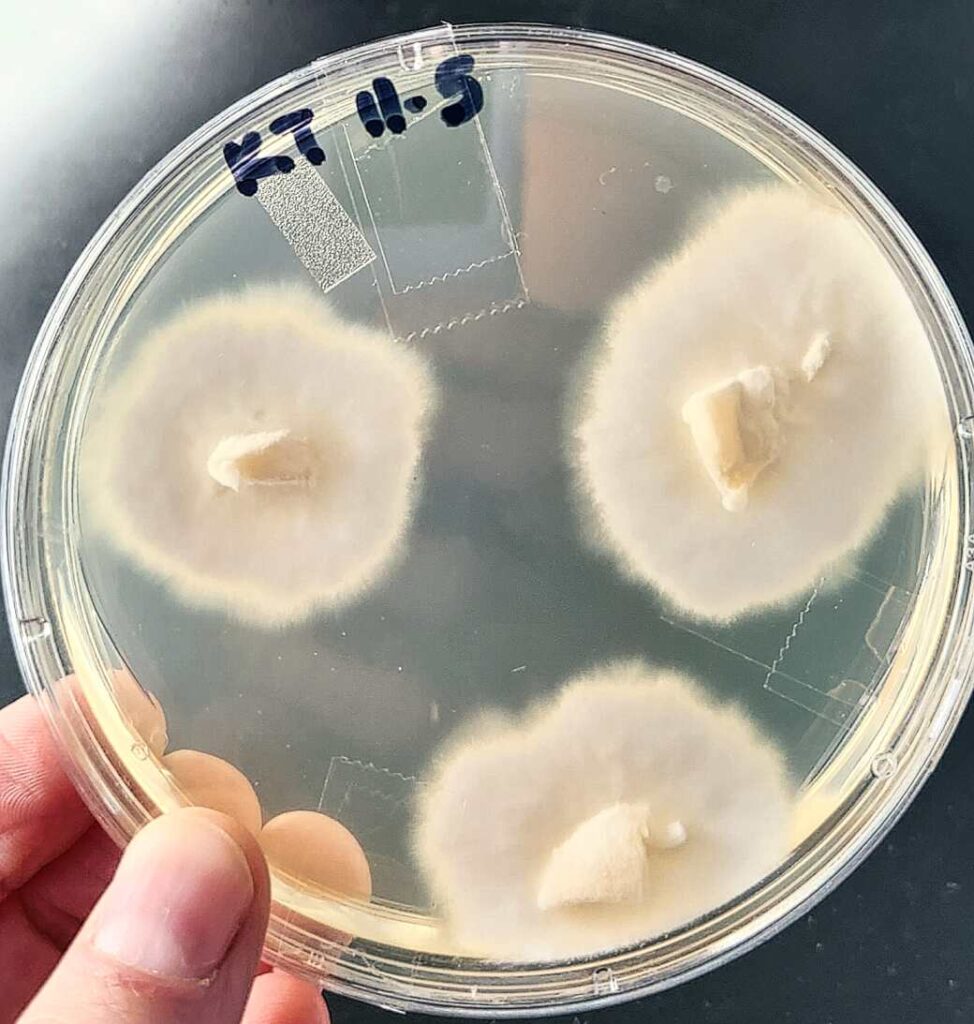
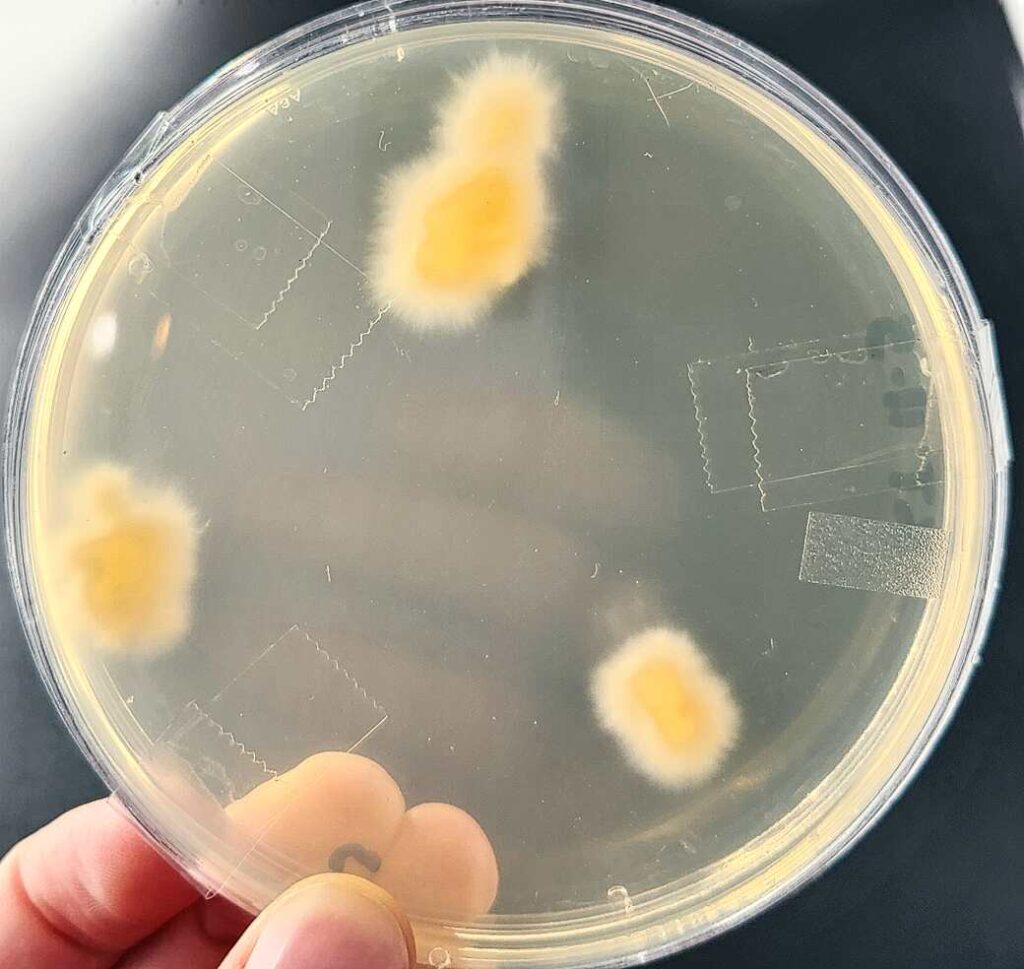
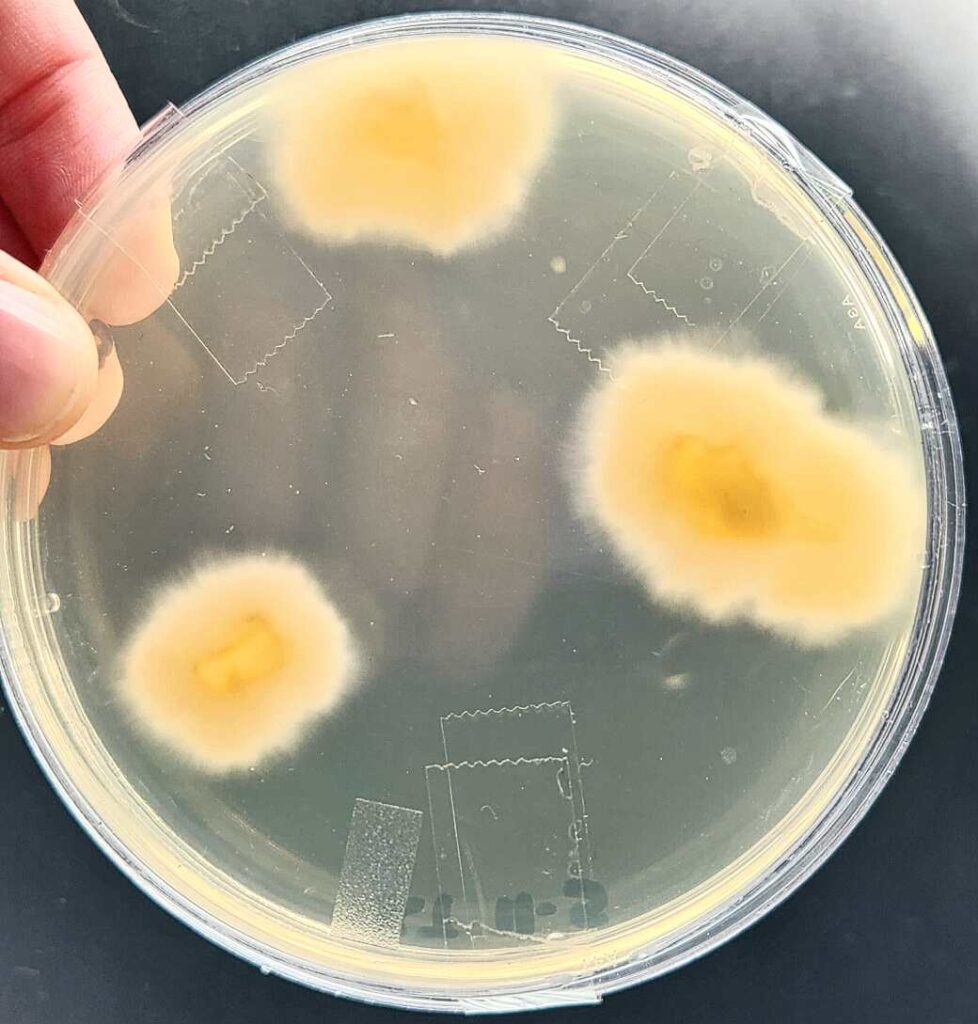
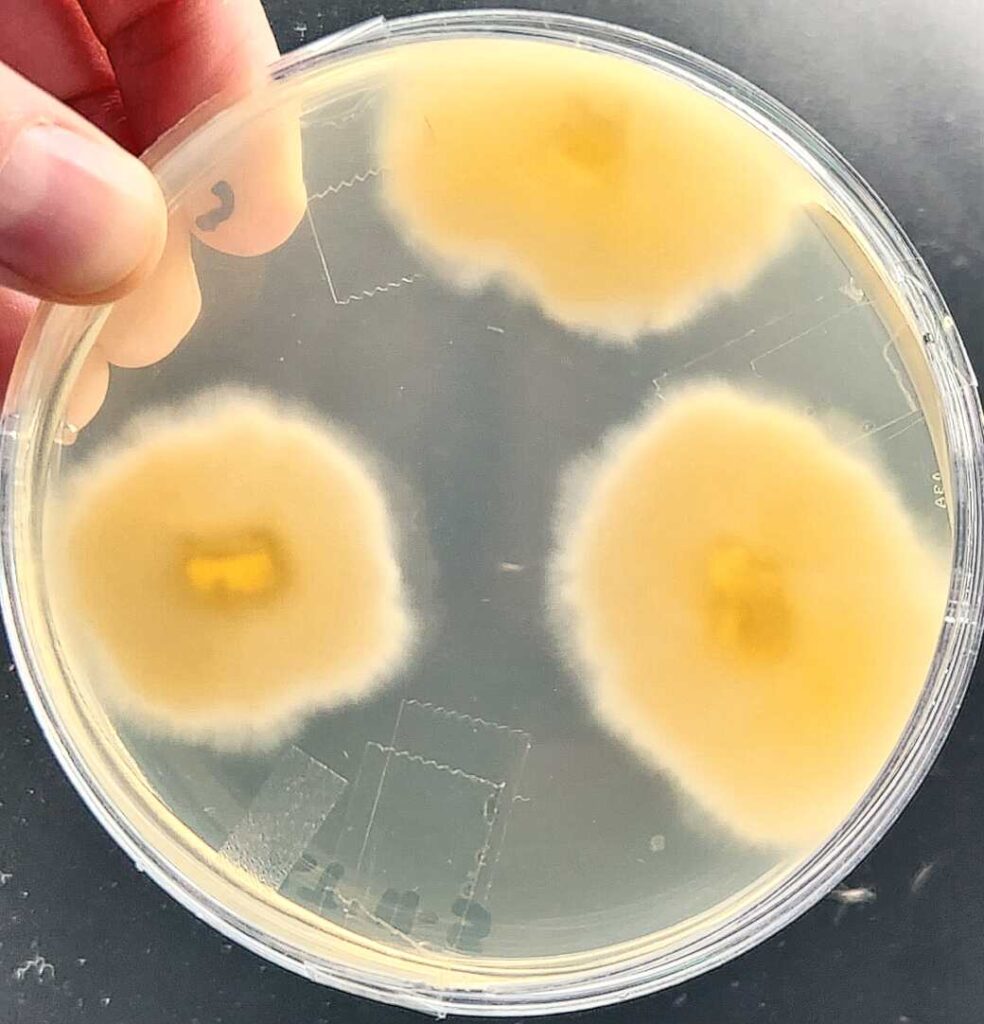
As you can see, clean growth is light-colored (white in front, yellow to white in back). The bottom-view pictures were taken one week, 11 days, and 16 days post-transfer.
Successful King Trumpet Clone
A successful King Trumpet clone will fill your petri dish with white, thick, fluffy mycelium. There should be no dark patches on any of the plate or mushroom material. Please note: the below dish contains two samples which were taken out of a contaminated plate, hence the extra agar visible around the parameter of the original cutting.
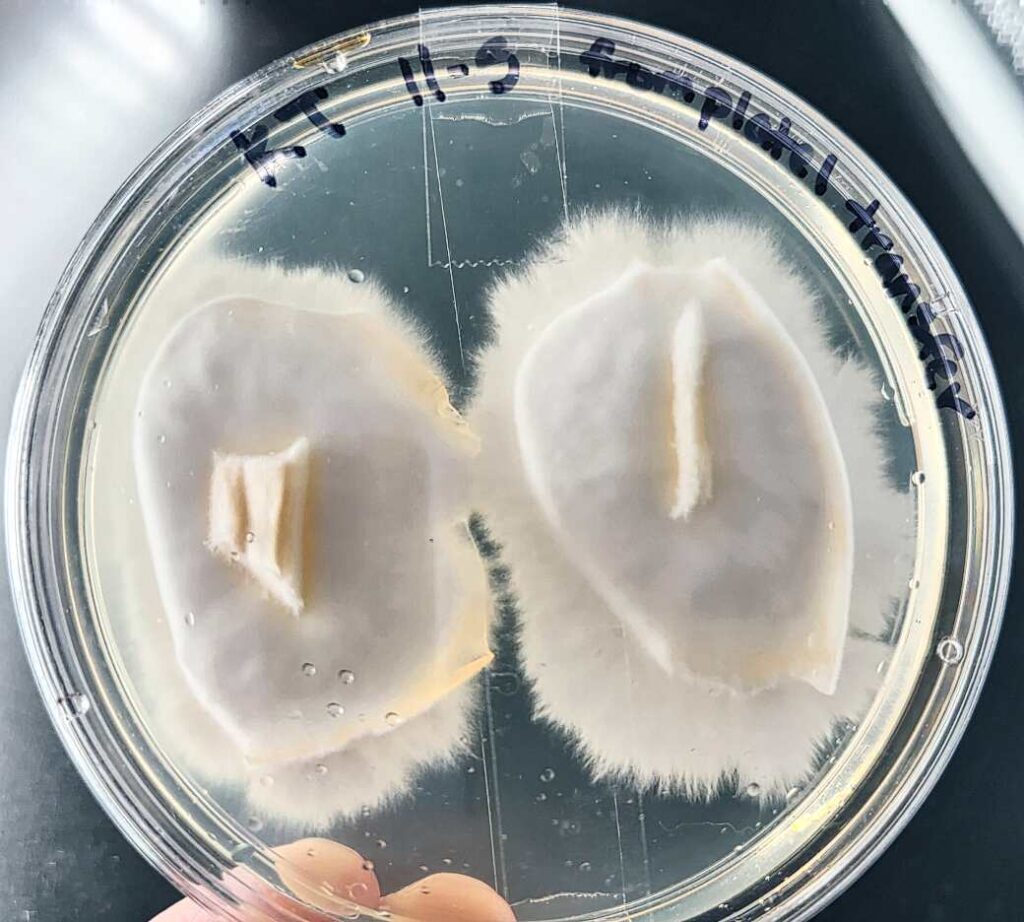
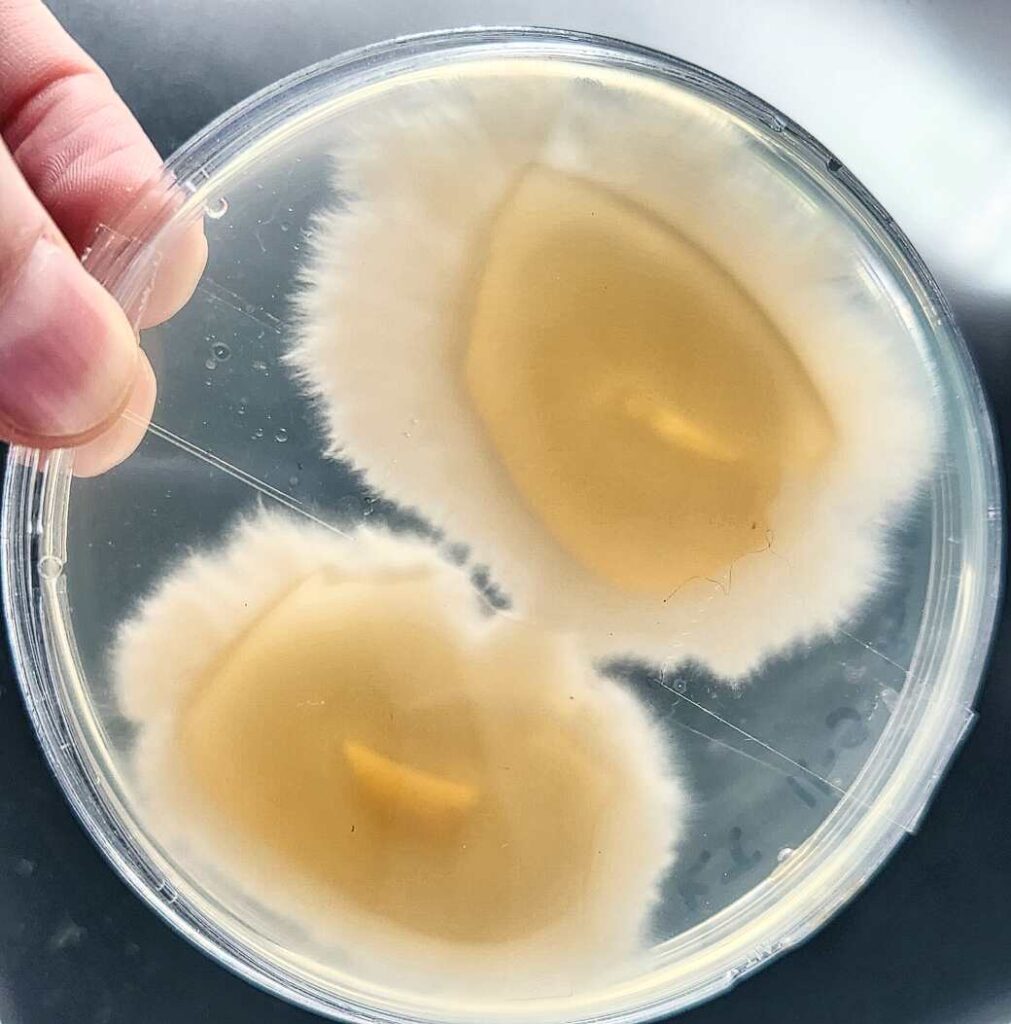
Once you have made it this far, pat yourself on the back. Congratulations on successfully cloning King Trumpet mushrooms!
If you are hoping to use these clones to grow your own mushrooms, your fungi journey is just beginning. Next step: use these clones to inoculate grain spawn. Find our post for growing king trumpet mushrooms in jars here!
There’s no rush though; agar plates with cloned King Trumpet mushrooms can be safely stored in the refrigerator for up to 6 months.
Have a successful harvest of mushrooms? Try this recipe for King Trumpet Risotto!
Want a new project while you wait? Anyone with the patience and fortitude to clone mushrooms may find making bean to bar chocolate equally rewarding; check out our instructions for creating handmade chocolate here!
Want to purchase our gourmet mushrooms? You can find us at the Orange City, IA farmer’s market this summer (2023). We plan to have baby bella, oyster, lion’s mane, and king trumpet mushrooms available this season. (This is in addition to fresh vegetables, fruits, and herbs). We’ll also be selling extra produce at our road market stand in Alton. Feel free to reach out if you’re looking for anything in particular! We can be reached at [email protected].






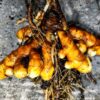

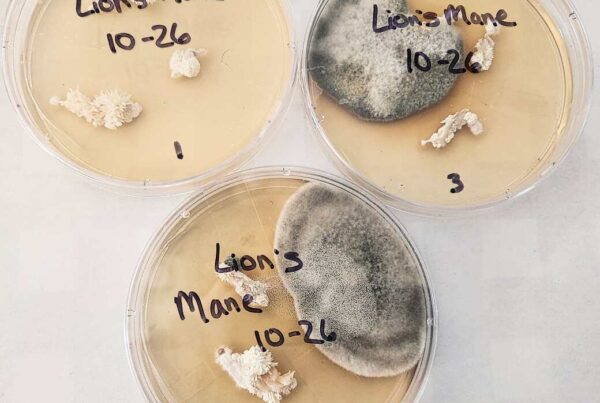
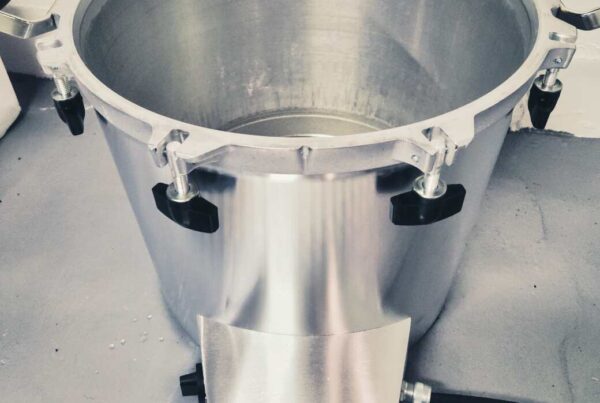

One Comment